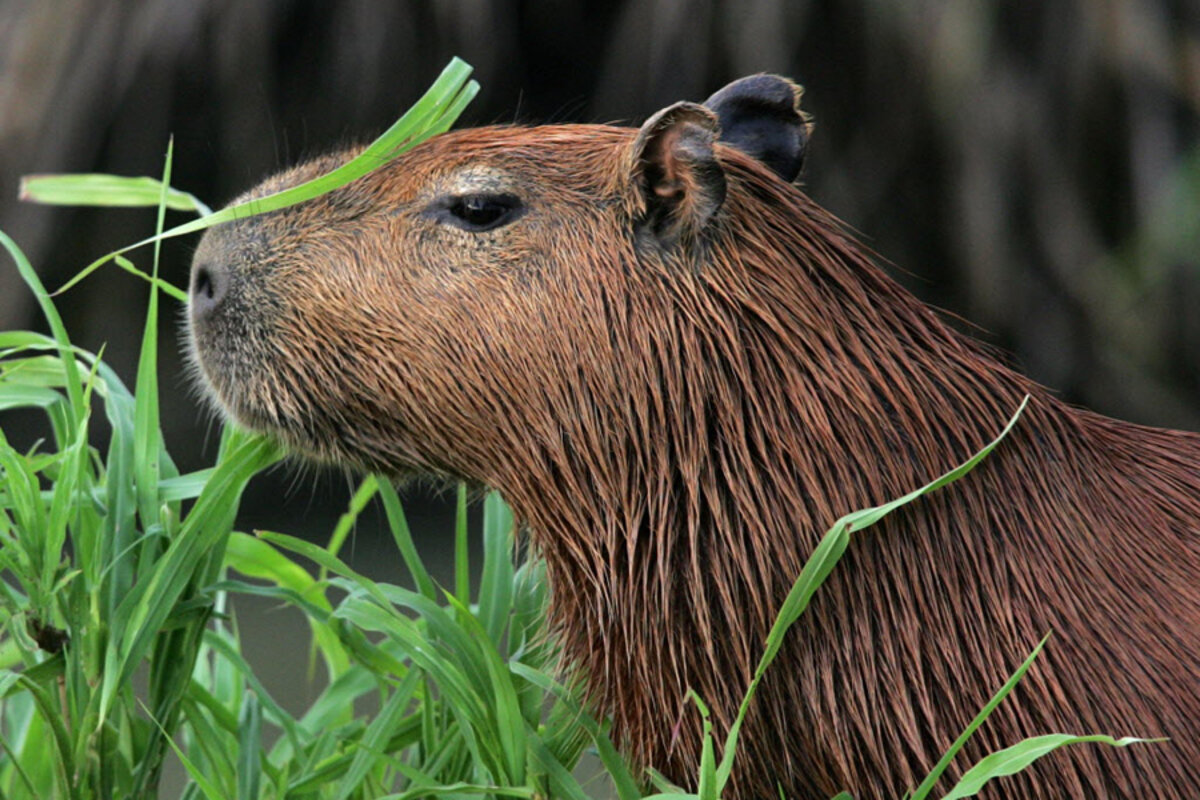Humongous prehistoric rodent had foot-long tusks
Loading...
The largest ever rodent used its huge incisors like elephant tusks, digging for food and defending itself from predators, scientists say.
Josephoartigasia monesi roamed the Earth about three million years ago. Native to South America, it sported a pair of powerful, foot-long incisors. Despite being closely related to modern guinea pigs, this ancient animal was no pet – it weighed well over 2,000 pounds and was similar in size to a buffalo. By comparison, the largest living rodent today, the capybara, weighs a paltry 145 pounds.
There is only one known fossil specimen of Josephoartigasia – a skull found in Uruguay in 2007. The specimen is missing its lower jaw, but is otherwise distinctive for its fearsome tooth. In , researchers used that skull to find out just how strong Josephoartigasia was.
Dr. Philip Cox, of the Centre for Anatomical and Human Sciences at the University of York, was able to determine the bite force of this massive rodent with computer modeling techniques. Cox generated a computerized model by the existing skull, using the lower jaw of a related species to replace the missing piece. Then, by a process called finite element analysis, he was able to measure how the skull would react to pressure in real time.
Cox found that Josephoartigasia had a bite force of 1,400 newtons – comparable to that of a tiger. But the buck (tooth) doesn’t stop there. Cox suggests that the mammoth rodent’s teeth could withstand three times more pressure than its own bite force.
And you were scared of the mouse in your apartment.
But for all its dental might, Josephoartigasia probably wasn’t much of a predator. Instead, it’s giant incisors were likely used for more innocuous purposes.
“We concluded that Josephoartigasia must have used its incisors for activities other than biting, such as digging in the ground for food, or defending itself from predators,” Cox said in . “This is very similar to how a modern day elephant uses its tusks.”





